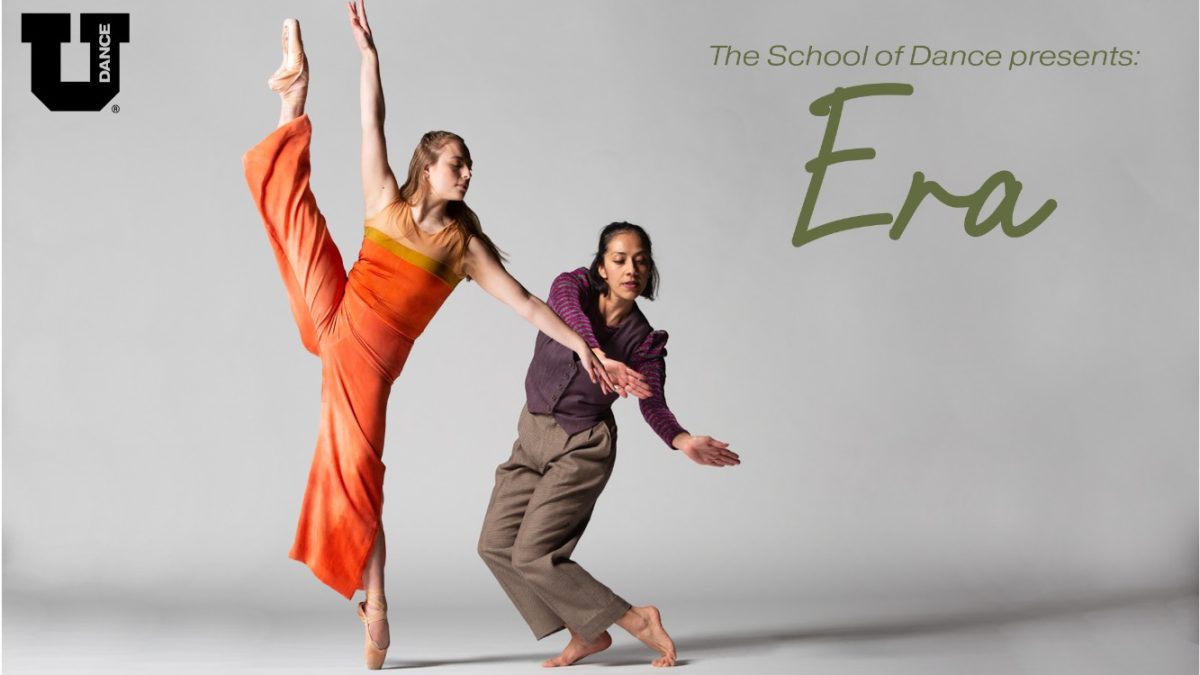Presented by the University of Utah School of Dance, “Era” features students performing pieces that exhibit an intersection of the past and present.
Two pieces are choreographed by Melissa Bobick and Helanius J. Wilkins, and two are restaged by Christopher Alloways-Ramsey and Natalie Desch. This show is a unique melding of different periods of time, hence the fitting title: “Era.” The entire dance experience was one of skill, talent and artistry.
A Diverse Program
In the show’s program, concert director Pablo Piantino prepares the audience for a “diverse experience incorporating aspects of traditional ballet, classic modern dance, and new perspectives in contemporary dance and ballet.”
As someone who doesn’t dance, it was at times difficult to point out exactly where these aspects were present and how they flowed together within a piece. However, each of the show’s four pieces had a distinct ambience. This made each one unique and quite memorable.
“BLiNK,” the first piece, is choreographed by Bobick. It has the intention of conveying the passion of youth, specifically of young dancers and their love for music and movement. Through this journey of passion in dance hardship undeniably arises. However, time is fleeting and even hard moments are to be appreciated.
Bobick uses her piece as a message for her dancers to “experience every moment they are given to its fullest.” Upon viewing the piece, Bobick’s message is evident in invigorating and lively choreography which couples beautifully with energetic strings in the background. “BLiNK” is a fantastic way to start off the show and had the audience eager for more.
Hypnotizing from Start to Finish
Following the contemporary-classical “BLiNK” is Wilkins’ “Together.”
This modern piece was hypnotizing from start to end. The audience in rapture as they watch the dancers’ jerky, controlled movements flow into the movements of a coherent system. The gray, monotonous set allows the dancers to stand out. As the piece ends, both music and on-stage visuals are cut. The dancers are left as the only factor on stage as they earn the audience’s full attention. Once the piece ends, it’s like every audience member simultaneously awakes from a dream as applause and cheering burst forth.
The third piece is a purely classical piece, serving as transportation back in time. “La Vivandière,” choreographed by Arthur Saint-Léon in 1844 and restaged by Ramsey, presents the story of a young woman and her love interest during wartime. The woman is a “vivandière“ — a French woman who would supply water, dried meats and rum to troops on the battlefield. The dancers showcase impressive technical skill as they joyfully perform to tell a story against the backdrop of the war.
The night ends with a classical-modern piece choreographed by José Limón, “Suite from ‘A Choreographic Offering.’” This piece is staged for this concert by Desch.
The final performance has 21 dancers flowing on and off the stage, making it the most populated piece of the night. Each dancer wears bodysuits of various bright colors. This contributes to a sense of organized chaos as they move together across the stage.
Fusion of Past and Present
With the pieces of this concert having contemporary, classical and modern influences, “Era” is an artistic manifestation of the passage of time in dance. Piantino notes in the program that the responsibility of the School of Dance faculty is to “challenge our students by introducing them to both new and longstanding concepts.”
“Era” accomplishes this by incorporating various styles in physically demanding pieces. Each piece showcases the School of Dance’s students’ ability to take on a challenge, and excel whilst doing so.
The entire dance experience is inspiring and invigorating. “Era” is a testament to the School of Dance’s ingenuity and the students’ hard work. Don’t miss out on the unique experience that this show provides!
“Era” has shows until Oct. 21, so I’d highly recommend checking it out for free with your Arts Pass.



